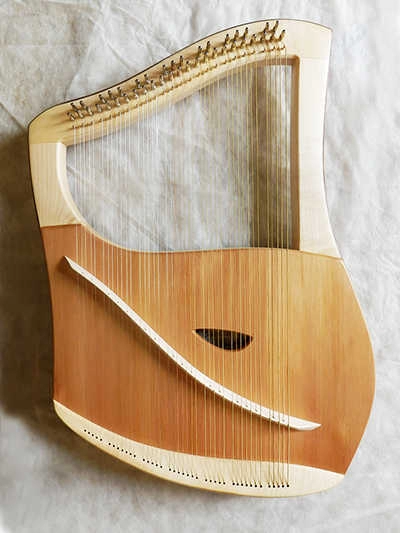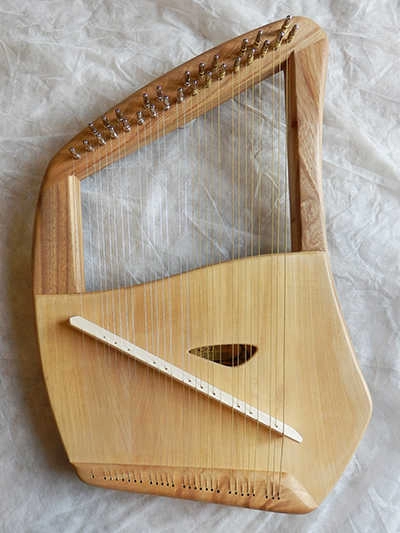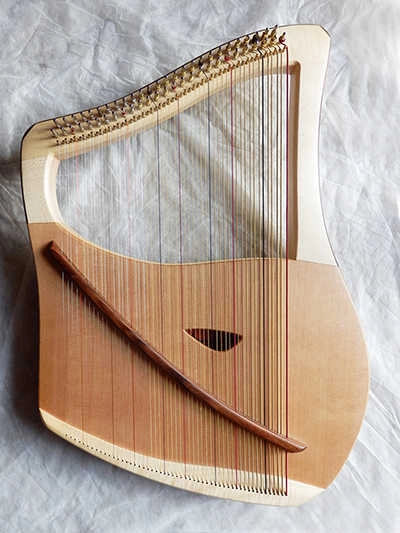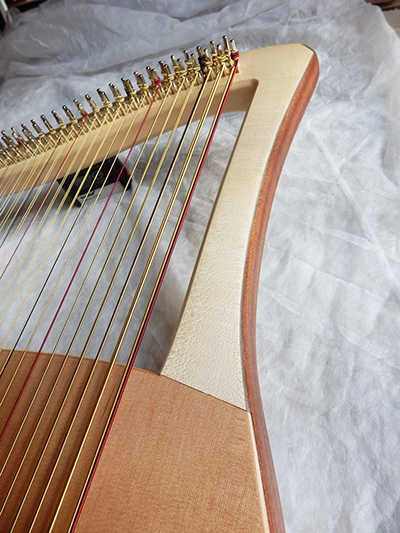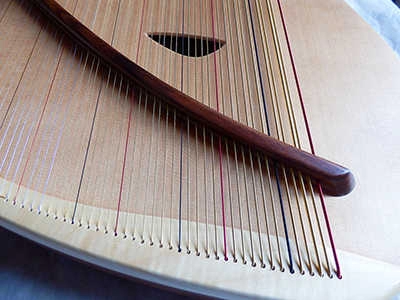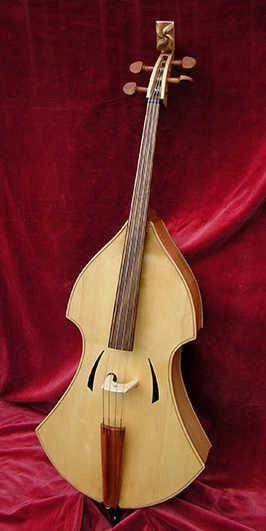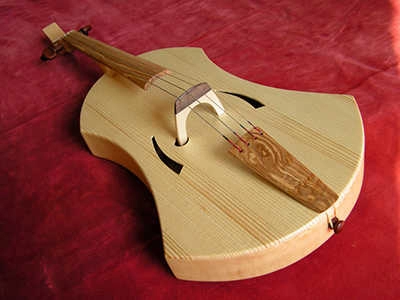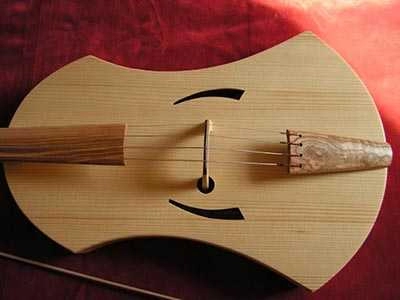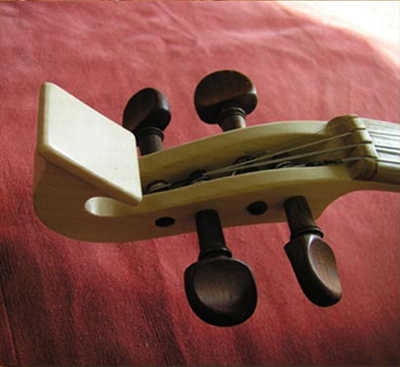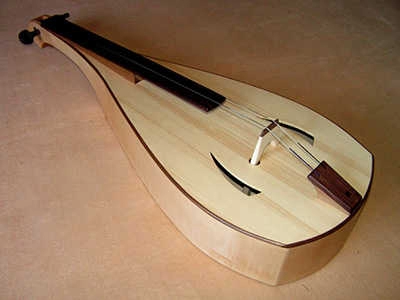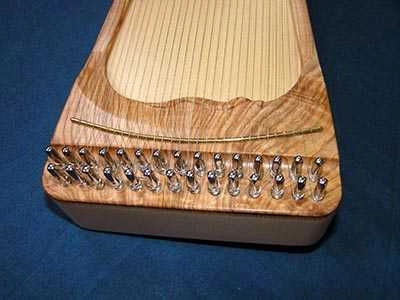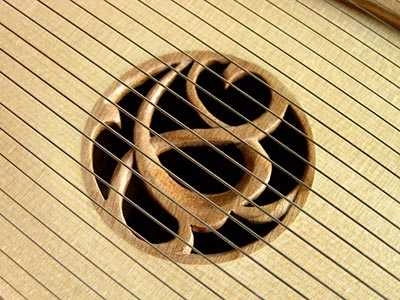About me
At the beginning of the third millennium, in such a chaotic and over-technotized time, I am wholeheartedly thankful to be able to introduce to you a number of unusual, traditional musical instruments created by the ANTON workshop - Lyres, kanteles, crwths, zithers and others.
The first impulse for the founding of this workshop came from the need of the already existing School of Anthroposophic Music Therapy, MUSICI HUMÁNY, under the guidance of Josef Krček, to enhance their range of instruments especially with lyres (the only available ones were important and unaffordable).
At that time I worked as a teacher at the Waldorf school in Příbram and I felt that with my experiences , I could be of help. (years ago, I had finished an apprenticeship in the manufacture of various string instruments). In February 1998, I began with the first small soprano lyre and by fall of that year production commenced full-time. Later, I expanded into other types of lyres and other instruments.
Currently, we build a number of therapeutic instruments, from pentatonic kanteles for children, soprano as well as alto lyres, to a group of string crwths and others.
These and many other reasons are the great motivation behind our work. We are eminently happy that we can be part in the creation of this non-traditional genre of music and we sincerely hope that more and more people will discover our instruments and find in their play happiness and harmony in their hearts.
Thank you.
Rostislav Anton
Therapeutic instruments
Therapeutic instruments
The lyre
The lyre is an ancient musical instrument which together with its relative the harp has a very special place among musical instruments. It reached its biggest eminence in ancient Greece. In Europe it was used until the Renaissance, but then it gradually faded from view.
A new impulse for the rebirth of the lyre as a therapeutical instrument came in the twenties of the 20th century through the work of the contemporary musician and pedagogue E. Pracht, who worked at the GOETHEAN in DORNACH in Switzerland. He decided to build a new model, more suitable for fine eurhythmics. His lyre therefore was not to be just a copy of the old instrument, but a new creation fulfilling the given situation and need. In cooperation with L. GÄRTNER and Dr. I. WEGMANN he developed the first prototypes who laid the foundation for the lyre as an important therapeutical instrument.
The lyre 2018
In 2018 we introduce a major redesign of our lyres improving their sound characteristics and making them more comfortable to play. The new ergonomic shape makes lyres well balanced on player’s lap and easier to play when using both hands without unnecessary tension. Innovations in construction of the frame and inner structure allowed us to make our lyres more durable, better sounding and lighter in weight at the same time.
New shape and whole proportion offer to a listener very pleasant musical experience. Bright and solid tone of voice relaxes a player and creates peacefull and safe space. Longer measure of strings and inner modificated body construction give to this instrument wide dynamic spectrum, from tones very strong to light silver tones.
This kind of solo lyre is designed especially for players with high demands on quality of playing and for those, who seek noble and charismatic sound.
Chromatic with the whole-tone string layout: E - e''', 49 strings
Chromatic with the traditional string layout: c - e''', 41 strings
 We would like to introduce important inovation in our production. Now on all Anton lyres there are small brass pins that hold the string always in the right position maintaining a constatnt space between two rows of strings.
We would like to introduce important inovation in our production. Now on all Anton lyres there are small brass pins that hold the string always in the right position maintaining a constatnt space between two rows of strings.
This innovation also helps freeing the sound and avoid ineligible resonation that sometimes occur when strings lead directly to a tuning peg.
Among other news, quality bronze strings are now being used on all lyres providing a better sound and resonance.
Its size makes this lyre one of the smallest ones. But even with its small proportions it has a lot to offer. Light and dark tones come together to a harmonious whole which speaks to the chest and breathing apparatus. High-strung strings and the balanced built of the instrument create a steady sonant sound, suitable for solo as well as for a group play.
Chromatic tuning: c´ - c´´´, 25 strings
Diatonic tuning: c´ - c´´´, 15 strings
Pentatonic tuning: d - e´´´, 14 strings
 We would like to introduce important inovation in our production. Now on all Anton lyres there are small brass pins that hold the string always in the right position maintaining a constatnt space between two rows of strings.
We would like to introduce important inovation in our production. Now on all Anton lyres there are small brass pins that hold the string always in the right position maintaining a constatnt space between two rows of strings.
This innovation also helps freeing the sound and avoid ineligible resonation that sometimes occur when strings lead directly to a tuning peg.
Among other news, quality bronze strings are now being used on all lyres providing a better sound and resonance.
The construction of the frame and the internal formation of the ribs create a full, warm and low tone. The proportion and the overall shape let the player hold the instrument comfortably and be able to reach the width of strings. The possibility of dynamic play and the creation of melodies in the lower base section encourage especially advanced musicians to play. The instrument is mostly suitable for group play.
Tuning: chromatic, E - g´´, 40 strings
New shape and whole proportion offer to a listener very pleasant musical experience. Bright and solid tone of voice relaxes a player and creates peacefull and safe space. Longer measure of strings and inner modificated body construction give to this instrument wide dynamic spectrum, from tones very strong to light silver tones.
This kind of solo lyre is designed especially for players with high demands on quality of playing and for those, who seek noble and charismatic sound.
Chromatic with the whole-tone string layout: C - e''', 53 strings or G# - g#''', 61 strings
Chromatic with the traditional string layout: C - e''', 53 strun
You may listen to its voice here »
 We would like to introduce important inovation in our production. Now on all Anton lyres there are small brass pins that hold the string always in the right position maintaining a constatnt space between two rows of strings.
We would like to introduce important inovation in our production. Now on all Anton lyres there are small brass pins that hold the string always in the right position maintaining a constatnt space between two rows of strings.
This innovation also helps freeing the sound and avoid ineligible resonation that sometimes occur when strings lead directly to a tuning peg.
Among other news, quality bronze strings are now being used on all lyres providing a better sound and resonance.
Its newly adjusted shape and general proportions offer a very pleasant listening experience to the listener. The clear and soft tone relaxes the player and creates a comfortable, protected space. A longer diapason of the base strings and a modified internal construction give this instrument a significant dynamic spectrum from very strong to very light, silver tones. This second type of lyre also offers comfortable holding and easy play, which will appreciate beginners as well as advanced players.
Tuning: chromatic, c - d´´´, 39 strings
The lyres with the new tuning are also available to build.
 We would like to introduce important inovation in our production. Now on all Anton lyres there are small brass pins that hold the string always in the right position maintaining a constatnt space between two rows of strings.
We would like to introduce important inovation in our production. Now on all Anton lyres there are small brass pins that hold the string always in the right position maintaining a constatnt space between two rows of strings.
This innovation also helps freeing the sound and avoid ineligible resonation that sometimes occur when strings lead directly to a tuning peg.
Among other news, quality bronze strings are now being used on all lyres providing a better sound and resonance.
The kantele
The Kantele is a traditional Finnish folk instrument, representing the family of zithers.
It is first mentioned in an ancient Finnish poem, where it symbolizes a mythical sorcerer with the name of VÄINÄMÖINEN, who created the instrument from whalebones, with strings from the hair of a young Finnish maid.
Originally, the kantele had only 5 horse-hair strings. It was used to accompany runic chants until the 18th century.
This type of kantele we offer is carved out of one piece of maple wood in a shape of a fish. The very fine tones in the gapped scale call for very carefull listening and convey an intense experience.
As a therapeutical instrument it is mainly aimed to children under the age of eight. It can of course be used for individual music making, for the sheer joy of playing.
Tuning: pentatonic, d´, e´, g´, a´, h´, d´´, e´´, 7 strings
It has a simple wing shaped and closed body.
A sufficiently large contents and a large sounding board create rather strong well-balanced tone with a captivating sound. The instrument is tuned in the diatonic or the gapped scale. It is suitable for younger school children or special teachers. Its superiour sound makes it an ideal concert instrument in small or large orchestral bodies.
Tuning: diatonic, c´ - c´´, 15 strings
Tuning: pentatonic, d´, e´, g´, a´, h´, d´´, e´´, g´´, a´´, h´´, d´´´, e´´´, 12 strings
The crwth
Originally the instrument of Celtic singers, known since the 6th century, the crwth’s form is reminiscent of the lyre. Later it became a popular string instrument in the English and Irish country side.
This instrument combines therapeutic sound quality with broad possibilities of music play. The diapason as well as the tuning are that of clasical violoncello. With its characteristic tone color and the extend of its sound, the instrument comes close to the naturalness of human song. The tone of the tenor cwrth is soft and warming and conveys a more intimate mood than the violoncello. While keeping with the violoncello playing technique even the most discriminated players can use the peculiar expressive abilities of this instrument.
Tuning: C, G, d, a, 4 strings
The type that we offer has been modified from its original shape, originating from the old welsh crwth.
A specific bridge and body give this instrument a very earthern, soft and warming sound, which can be especially applied in music therapy. But its characteristic sound color will also be an enrichment to any group playing old music.
Tuning: g, d, a´, e´, 4 strings
The bass crwth is a very specific string instrument with an unusual sound color and quality in base register. Thanks to specially designed bridge which connects the front and back board of the crwth (similary as the core in classical instruments), the whole instrument pleasantly vibrates during play. The crwth creates a very strong sound possible experience, which calms and relaxes any muscle tension. A part from very broad use in therapy, the bass crwth can be used as a bass instrument in group play. The crwth has only two strings, which makes it easy to play even for less experienced players.
Tuning: C, G, 2 strings
The psalter (or psalterion, saltere, psalterium, etc.) is an ancient musical instrument, played since ancient times in many countries in various forms. Early versions consisted of a simple board with gut strings, strung between tuning pins.
The modern form with its sharp triangle form finds its use mainly in music therapy. The instrument that we offer combines sound of a therapeutical quality with a very interesting and singular design. The sound of a psalter is crystal clear, silvery bright, reminiscent of a ray of light. Its range of more than two chromatic octaves offers to players a rich musical experience.
Tuning: chromatic, c´ - e´´´, 29 strings
Pricelist
Pricelist
Pricelist to be found here.
Contact
Leave us a note
+420 604 642 591
antonlyra@volny.cz
Ryneček 149, Příbram
Česká republika
© Rostislav Anton
WEBby KOWORKS.CZ

